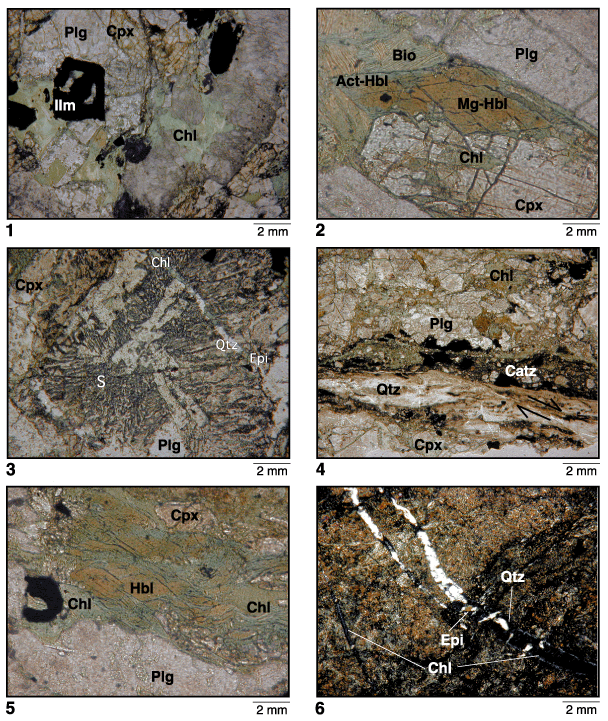
Plate P3. Photomicrographs of diabase from Site 1117. 1. Undeformed coarse-grained gabbro. Note the development of chlorite patches replacing clinopyroxene (plane-polarized transmitted light). 2. Porphyroclast of zoned amphibole with a brown Mg-Hbl core and a green actinolitic rim. The development of amphibole is associated with the presence of biotite replacing clinopyroxene (plane-polarized transmitted light). 3. Symplectitic texture at the contact between clinopyroxene and plagioclase (plane-polarized transmitted light). 4. Deformed gabbro. Note the development of ductile shear zone consisting of recrystallized quartz in the middle of a cataclasite. The cataclasite zone is made of clinpyroxene, amphibole, and plagioclase grains in a dark brown matrix (plane-polarized transmitted light). 5. Deformed coarse-grained gabbro. Note the development of chlorite flakes along shear bands cutting a porphyroclast of amphibole (plane-polarized transmitted light).
6. Veins filled with a quartz + epidote assemblage are filled with chlorite cutting the brecciated gabbro (cross-polarized transmitted light). Cpx = clinopyroxene, Plg = plagioclase, Glau = glaucony, Chl = chlorite, Qtz = quartz, Ilm = ilmenite, Bio = biotite, Epi = epidote, Hbl = hornblende, Act-Hbl = actinolitic hornblende, Mg-hbl = magnesiohornblende, S = symplectite, Catc =
catclasite.



![]()